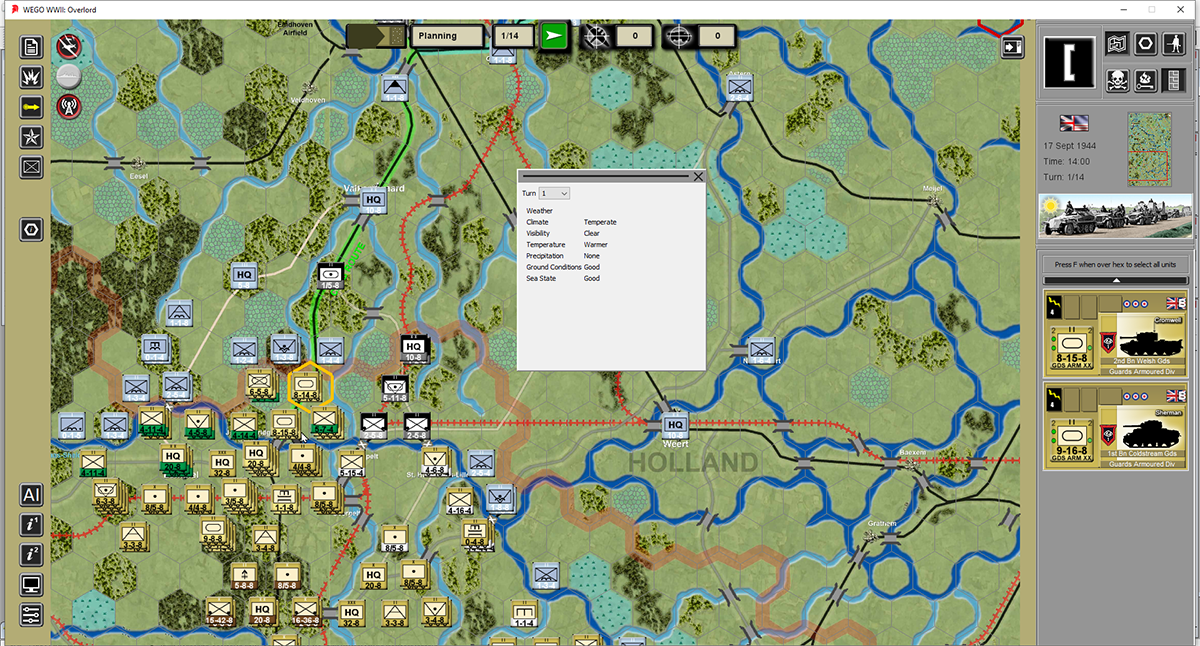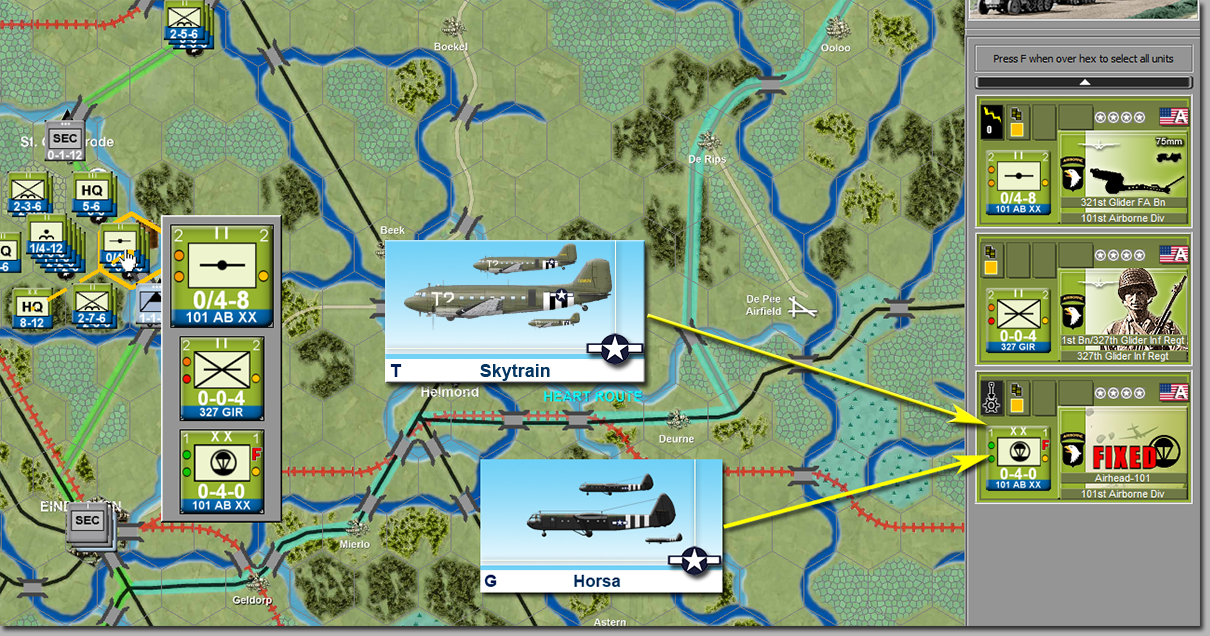
Some ALPHA testing insights to the Monty's Front Trilogy game engine...
"On the Way to the Rescue!"
This scenario might just end up being my favorite for WEGO: MARKET-GARDEN. I've played it twice (both sides) and each time, I'm thinking of how I can play it better. It is an equal fight.
Here's the background:
Force Level: Medium
Complexity: Medium
Advantage: Balanced
"I'm not saying this will be the easiest party that we've ever attended but I still wouldn't miss it for the world. I like to think of this as one of those American Western films. The paratroops, lacking substantial equipment; always short of food--these are the besieged homesteaders. The Germans? Well naturally they're the Bad Guys. And XXX Corps? We my friends are the cavalry--on the way to the rescue!" -- Lieutenant-General Brian Horrocks, Commander, XXX Corps, A Bridge Too Far
Situation: Elements of the German 1st Fallschirm-Armee are defending along the Maas-Scheldt Canal. This scenario covers the first three days of Operation Market-Garden. It covers the attack of British XXX Corps and link-up with the US 101st and 82nd Airborne Divisions. The scenario starts in the afternoon of 17 September. Therefore, game turn 1 (1400) is a daylight turn; game turn 2 (1800) is a night turn.
Historical Background: Operation Market-Garden marked a critical turning point in World War II as the Allies aimed to secure a strategic foothold in the heartland of Nazi Germany. This ambitious operation, devised by British Field Marshal Bernard Montgomery, sought to launch a daring airborne assault followed by a ground offensive, with the ultimate goal of capturing a series of key bridges in the Netherlands and bypassing the heavily fortified Siegfried Line.
In the days leading up to September 17th, meticulous planning and preparations were underway. Allied paratroopers from the 101st and 82nd Airborne Divisions, as well as the British 1st Airborne Division, underwent rigorous training and briefings. The airborne forces, consisting of over 35,000 men, were tasked with securing and holding key bridges and strategic positions, paving the way for the ground troops to advance rapidly.
Meanwhile, a massive logistics operation was put into motion. Airfields in England were buzzing with activity as aircraft were readied to transport troops, equipment, and supplies across the English Channel. The combined effort involved over 1,500 transport aircraft and gliders, making it one of the largest airborne operations in history.
The weather, however, posed a significant challenge. Unfavorable conditions delayed the operation by a day, causing logistical headaches and a sense of mounting anticipation among the troops. Finally, on the morning of September 17th, the skies cleared, and the order was given to proceed.
As dawn broke, hundreds of aircraft and gliders filled the sky, forming an awe-inspiring sight. The paratroopers descended into enemy territory, encountering heavy resistance from German forces. Despite fierce opposition and scattered landings, the Allied airborne troops fought valiantly to secure their objectives.
Operation Market-Garden marked the beginning of a high-stakes campaign that would test the determination and resolve of both sides. The ultimate success or failure of this audacious plan would have far-reaching implications for the ongoing Allied push towards victory in Europe.



